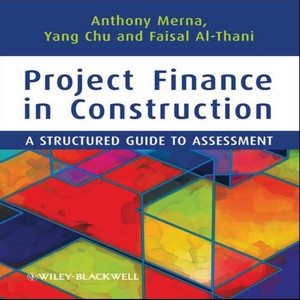Project finance in construction
A Structured Guide to Assessment
by Anthony Merna, Yang Chu, Faisal Fahad Al-Thani
At the time of writing this guide, financial markets remain uncertain.
Project finance in construction has led many sponsors of project financings to further consider bank liquidity, the higher cost of finance and general uncertainty for demand.
Project finance in construction has resulted in the postponement of a number of projects in certain industry sectors.
Governments have seen tax receipts drastically reduced, which has affected their ability to finance infrastructure projects, often irrespective of the perceived demand.
Equity providers still seek to invest; however, there are less opportunities due to market dislocation.
Due to the demand for global infrastructure, it is believed that project financings will return to their pre-crunch levels, or more so; however, lenders’ liquidity costs will be passed on to the borrowers.
Lenders will also be under stricter regulation both internally and externally.
The steps outlined in the guide are designed to provide a basic understanding for all those involved or interested in both structuring and assessing project financings.
Secondary contracts involving constructors, operators, finance providers, suppliers and offtakes can be developed and assessed to determine their commercial viability over a project’s life cycle.
Project financing in construction is not a new financing method. It has been used to finance industrial projects such as mines, pipelines, power stations and oil fields.





Reviews
There are no reviews yet.